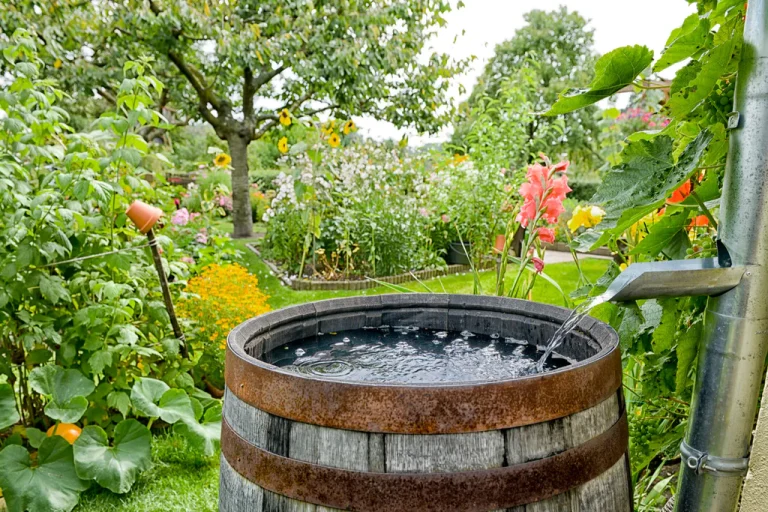Are pests wreaking havoc in your beautiful garden? Don’t despair! This article explores effective methods to control pests in gardens, allowing you to reclaim your green oasis. Whether you’re battling an onslaught of aphids, snails, or pesky rabbits, we’ve got you covered. From natural remedies like companion planting and beneficial insect release to environmentally-friendly pesticides, you’ll discover a range of approaches to keep unwanted visitors at bay. Say goodbye to damaged crops and hello to a thriving garden, as we show you how to tackle garden pests with ease.
Table of Contents
ToggleBiological Control
Introduction to Biological Control
Biological control is a natural and environmentally friendly approach to managing pests in gardens. It involves using beneficial insects and organisms that feed on or parasitize harmful pests, keeping their populations in check. By utilizing the natural predators and parasites of pests, you can reduce the need for chemical pesticides and maintain a balanced ecosystem in your garden.
Using Beneficial Insects
Beneficial insects play a crucial role in maintaining the balance of your garden ecosystem. Ladybugs, lacewings, and praying mantises, for example, are voracious predators that feed on aphids, mites, and other common garden pests. By attracting and releasing these beneficial insects into your garden, you can target specific pests and limit their damage. You can attract them by planting flowers such as marigolds, daisies, and sunflowers, which act as nectar sources for these beneficial insects.
Encouraging Natural Predators
In addition to using beneficial insects, you can also encourage natural predators to thrive in your garden. Birds, bats, and frogs are examples of natural predators that actively feed on pests such as snails, slugs, and insects. By creating a habitat that attracts these animals, such as providing bird feeders, installing bat boxes, or adding a small pond, you can create a balanced and biodiverse garden environment. Natural predators will help control pests while adding beauty and interest to your garden.
Cultural Control
Crop Rotation
Crop rotation is a valuable technique for preventing the build-up of pests and diseases in your garden. By changing the location of crops each season, you can disrupt the life cycles of pests and reduce their impact on your plants. Rotate crops from different plant families, as pests and diseases are often specific to certain plant species or families. For example, if you grew tomatoes in one area this year, consider planting beans or lettuce in that spot next year. Crop rotation helps maintain soil health and fertility, while minimizing the need for chemical interventions.
Companion Planting
Companion planting involves growing different plants in close proximity to provide mutual benefits. Some plants release natural chemical compounds that repel pests, while others attract beneficial insects. For example, planting marigolds near your vegetable garden can deter aphids and nematodes. Similarly, planting herbs like basil, thyme, or rosemary alongside your crops can repel pests like whiteflies or aphids. Be sure to research which plants complement each other and which plants should be kept apart, as some combinations may have negative effects.
Proper Watering and Fertilization
Proper watering and fertilization practices are essential for maintaining healthy plants that are more resistant to pests and diseases. Overwatering can create favorable conditions for fungal diseases, while underwatering can weaken plants, making them more susceptible to pests. Be mindful of the watering needs of different plant species and adjust accordingly. Additionally, providing adequate nutrients through proper fertilization will help plants grow strong and resilient. Avoid over-fertilizing, as excessive nitrogen can attract pests.
Chemical Control
Types of Chemicals Used
Chemical control involves the use of pesticides to manage pests in the garden. There are two main types of pesticides: synthetic pesticides and organic pesticides. Synthetic pesticides are made from chemicals that directly target and kill pests. Organic pesticides, on the other hand, use naturally occurring substances derived from plants, minerals, or bacteria. When using chemical control, it is important to carefully read and follow the instructions on the label to avoid any potential risks and ensure effective pest control.
Safety Considerations
When using chemical pesticides, it is crucial to prioritize safety for yourself, your family, and the environment. Always wear protective clothing, such as gloves and a mask, when handling pesticides. Be aware of any potential risks associated with the specific pesticide you are using, and follow proper disposal methods for containers and unused products. If possible, choose pesticides with low environmental impact and target-specific pest control capabilities. Consider organic pesticides as an alternative, as they tend to have a lower impact on the environment and nontarget organisms.
Application Techniques
Proper application techniques are essential for maximizing the effectiveness of chemical control methods while minimizing unwanted side effects. Follow the instructions provided by the manufacturer and use the recommended dosage for the specific pest you are targeting. Apply pesticides during the recommended time of day, usually early morning or evening, when the target pests are most active. Be cautious not to spray pesticides on windy days to avoid drift, which can harm beneficial insects, neighboring plants, or even yourself. Use targeted application methods, such as spot treatments, to reduce the amount of pesticide needed.
Physical Control
Handpicking and Trapping
Handpicking and trapping are effective physical control methods for managing pests in small gardens or specific areas. By manually removing pests, such as caterpillars or slugs, you can significantly reduce their populations without relying on chemicals. Regularly inspect your plants for signs of pests and promptly remove any you find. Traps can also be used to attract and capture pests, such as fruit flies or beetles. Simple traps, such as sticky traps or beer traps for slugs, can be made or purchased to help control pest populations.
Barriers and Screens
Barriers and screens provide a physical barrier between plants and pests, effectively preventing them from accessing your crops. For example, constructing a fence around your vegetable garden can deter larger pests, such as rabbits or deer. Using row covers or mesh nets over plants can protect them from flying insects and birds. Be sure to secure the barriers properly to prevent pests from finding gaps or entering from the soil. Regularly check for damage or tears in the barriers and promptly repair them to maintain their effectiveness.
Mulching
Mulching is a useful physical control method that helps suppress weed growth and create unfavorable conditions for pests. Organic mulch, such as straw, leaves, or wood chips, can smother weed growth, reducing competition for resources and providing a habitat for beneficial organisms. Additionally, certain types of mulch, like pine straw or cedar chips, can repel pests due to their natural scent. Apply a layer of mulch around the base of plants, taking care to avoid direct contact with plant stems, to deter pests and maintain moisture levels in the soil.
Mechanical Control
Using Garden Tools
Garden tools, such as handheld pruning shears or loppers, can be valuable for controlling pests in your garden. Regularly inspect plants for any signs of pest infestations or disease and promptly remove affected plant parts. Trimming away infected leaves or branches can prevent the spread of diseases and discourage pests from congregating. Additionally, tools like hoes or cultivators can help remove weeds, limiting their ability to harbor pests or compete with your plants for resources. Maintain your garden tools by keeping them clean and sharp for optimum performance.
Tilling and Cultivation
Tilling and cultivation are mechanical control techniques commonly used to disrupt pest life cycles and reduce populations. By turning over the soil, you expose pests and their eggs to the elements, making them vulnerable to predators or adverse weather conditions. Tilling can also bury weed seeds, preventing them from germinating and reducing competition for your plants. However, it is important to be cautious while tilling, as excessive disturbance of the soil can disrupt the beneficial organisms and lead to soil erosion.
Mowing and Pruning
Regular mowing and pruning not only keep your garden neat and tidy but also play a role in pest control. Lawns that are consistently mowed at the correct height discourage pests, such as ticks or fleas, from thriving. Pruning shrubs and trees can help improve air circulation and sunlight penetration, reducing the favorable conditions for certain pests or diseases. Remove any dead or dying plant material, as it can attract pests and serve as a breeding ground for pathogens. Proper disposal of pruned or mowed material is important to prevent the spread of pests or diseases.
Organic Control
Using Organic Pesticides
Organic pesticides are a natural and environmentally friendly alternative to synthetic pesticides. They use substances derived from plants, minerals, or bacteria to control pests in a targeted and biodegradable manner. Organic pesticides include products such as neem oil, insecticidal soap, or diatomaceous earth. When using organic pesticides, follow the recommended application rates and reapply as necessary. Organic pesticides can be effective for managing pests while minimizing harmful impacts on beneficial insects and other nontarget organisms.
Beneficial Nematodes
Beneficial nematodes are microscopic roundworms that can be used to control soil-dwelling pests, including grubs, caterpillars, and beetles. These nematodes seek out and infect their host pests, eventually killing them. They are safe to use around plants, pets, and humans and are an effective biocontrol method in gardens. To apply beneficial nematodes, mix them with water according to the package instructions and apply the solution to the soil. Ensure that the soil is adequately moist for the nematodes to move freely and target the pests.
Compost Tea
Compost tea is a nutrient-rich liquid fertilizer that can also help control pests, diseases, and promote plant health. It is made by steeping compost in water, allowing the beneficial microorganisms to multiply and thrive. These microorganisms can suppress pest populations by outcompeting them or by producing substances that are toxic to pests. To make compost tea, fill a container with water and add compost, then let it steep for an appropriate amount of time. Strain the liquid and apply it to the soil or foliage of your plants. Compost tea can be a valuable addition to your garden as part of an organic pest management approach.
Natural Control
Attracting Birds
Birds are excellent natural pest controllers, as they feed on insects and other small garden pests. Attracting birds to your garden can help keep pest populations under control while adding beauty and diversity to your outdoor space. Provide food sources, such as bird feeders or native plants that produce berries, to attract different bird species. Additionally, create bird-friendly habitats by offering nesting boxes, bird baths, and providing perching spots like trees or shrubs. A variety of bird species will contribute to a balanced ecosystem, ensuring a healthy and pest-free garden.
Installing Bat Boxes
Bats are often misunderstood creatures, but they play a crucial role in pest control by consuming vast amounts of insects, including mosquitoes, moths, and beetles. By installing a bat box or bat house in your garden, you can encourage bats to roost and help control pest populations naturally. Bat boxes should be placed high up in the trees or mounted on buildings, preferably facing south or southeast to provide warmth and sunlight. Create a welcoming environment by planting night-scented flowers like evening primrose or heliotrope, as they attract insects that bats feed on.
Creating a Habitat
Creating a diverse and welcoming habitat in your garden can help promote natural control of pests. Plant a variety of native plants that provide food and shelter for beneficial insects, birds, and other wildlife. Choose plants that bloom at different times to ensure a continuous source of nectar and pollen throughout the growing season. Avoid the use of synthetic pesticides, as they can harm beneficial populations. By mimicking natural ecosystems, you will encourage a self-sustaining garden environment where pests are controlled by natural predators and the balance of nature is maintained.
Integrated Pest Management
IPM Principles
Integrated Pest Management (IPM) is a holistic approach to pest control that combines various techniques and strategies to manage pests effectively while minimizing environmental impact. The principles of IPM involve utilizing a combination of cultural, biological, physical, mechanical, and chemical control methods in a coordinated and sustainable manner. By understanding the life cycles and habits of pests, monitoring their populations, and taking preventive measures, IPM helps keep pest levels below damaging thresholds without relying solely on harmful pesticides.
Monitoring and Early Detection
Monitoring and early detection are vital components of an effective IPM program. Regularly inspect your garden for signs of pests, such as chewed leaves, holes, or sticky residue. Use physical traps or sticky cards to capture pests and monitor their population levels. By detecting pest infestations early, you can intervene promptly and implement targeted control measures before the situation worsens. Monitoring also helps evaluate the effectiveness of your control efforts and determine whether additional action is necessary.
Threshold Levels
Threshold levels in IPM refer to the population levels at which action is required to avoid significant damage to plants or the ecosystem. By setting specific threshold levels for different pests, you can prevent unnecessary interventions while ensuring prompt control when necessary. These thresholds can be determined based on factors such as the economic value of the crop or the tolerance level for aesthetic damage. Maintaining a balance in your actions and considering the overall health of your garden ecosystem is essential in effective pest management.
Preventive Control
Plant Selection and Health
Selecting the right plants and maintaining their health is a fundamental aspect of preventive pest control. Choose plant varieties that are naturally resistant or tolerant to common pests in your region. By doing so, you are reducing the likelihood of pest infestations in the first place. Additionally, provide optimal growing conditions, including proper sunlight, water, and nutrients, to promote plant health and vigor. Healthy plants are better equipped to resist pests and are less likely to become susceptible to diseases.
Maintaining Garden Cleanliness
Maintaining garden cleanliness is crucial for preventing the buildup of pests and diseases. Remove dead plant material, fallen leaves, and fruit from the ground, as they can attract pests and serve as breeding grounds. Regularly weed your garden to eliminate potential host plants for pests. Clean gardening tools after each use to prevent the spread of diseases or pests between plants. By practicing good hygiene and cleanliness, you can minimize the environment that pests thrive in, making your garden less attractive to them.
Proper Waste Disposal
Proper waste disposal is an important preventive measure in pest control. Dispose of plant debris, pruned branches, or harvested produce properly to prevent pests from finding a new home or food source. Seal and place infested plant material in sealed plastic bags before disposing of them to avoid spreading pests or diseases to other areas. Composting can be a beneficial way to recycle plant materials and enrich your soil, but be sure to follow proper composting guidelines to prevent potential pest or disease infestations.
Biotechnological Control
Genetically Modified Crops
Genetically modified (GM) crops, also known as transgenic crops, offer a biotechnological approach to pest control. These crops are engineered to express genes from other organisms, providing resistance to specific pests or diseases. For example, Bt corn produces a natural pesticide that targets specific insect pests. This technology is highly effective in reducing the use of chemical pesticides and protecting crops from damage. However, the use of GM crops is a topic of ongoing debate, and it is important to consider the potential risks and benefits associated with their cultivation.
RNA Interference Technology
RNA interference (RNAi) technology is a cutting-edge biotechnological approach that uses small RNA molecules to disrupt the gene expression of specific pests. By silencing genes essential for pest survival, RNAi technology can effectively control pests without harming beneficial organisms or the environment. This technology has the potential to revolutionize pest control and reduce the need for chemical pesticides. However, further research is still needed to ensure its safety and effectiveness in different agricultural settings.
Introduction of Sterile Insects
The introduction of sterile insects is a biotechnological strategy used to control insect pests that reproduce sexually. Sterile insects are produced in large numbers in laboratories and sterilized through techniques such as irradiation. When released into the wild, these sterile insects mate with wild counterparts, resulting in infertile eggs and a decline in the overall pest population over time. This approach has been successful in controlling pests like the Mediterranean fruit fly and the screwworm fly. However, careful planning and monitoring are crucial to ensure the success and effectiveness of such programs.
In conclusion, effective pest control in gardens requires a comprehensive approach that encompasses various methods and strategies. By utilizing biological, cultural, chemical, physical, mechanical, organic, natural, integrated pest management, preventive, and biotechnological control techniques, you can effectively manage pests while promoting a healthy and sustainable garden environment. By cultivating awareness, implementing preventive measures, and maintaining balance within the ecosystem, you can minimize the reliance on chemical pesticides and establish a harmonious coexistence between your plants and the natural world.









